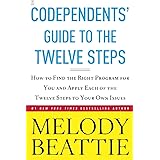The concept of addiction has long been shrouded in misconception, often narrowly defined by visible physical symptoms rather than the underlying behavioral pathology. As illuminated in the accompanying video featuring Maia Szalavitz, this flawed understanding has not only misrepresented conditions like cocaine addiction but also stigmatized pain patients who develop physical dependence without exhibiting compulsive substance-seeking behaviors. The true issue, therefore, lies in a widespread mischaracterization of addiction that hinders effective prevention, treatment, and public policy.
A more precise, evidence-based understanding of addiction – as a compulsive pattern of behavior persisted despite negative consequences – offers a clearer pathway. This redefinition is crucial for identifying those truly at risk, understanding the mechanisms behind behavioral addictions like gambling, and developing nuanced strategies that address genuine vulnerability rather than simply restricting access to potential triggers. By dissecting the core components of addiction, particularly how our brains process reward and risk, we can better safeguard public health and offer targeted support.
1. Redefining Addiction: Beyond Physical Dependence
For decades, the prevailing narrative surrounding addiction mistakenly hinged on the presence of acute physical withdrawal symptoms. This perspective, as highlighted by Szalavitz, led to peculiar classifications where substances like cocaine were deemed “non-addictive” due to the absence of severe physiological withdrawal akin to alcohol or heroin. Such definitions were not merely academic; they carried profound real-world consequences, often underplaying risks and complicating treatment.
The contemporary understanding, enshrined in diagnostic manuals like the DSM-5 (Diagnostic and Statistical Manual of Mental Disorders), shifts the focus to a pattern of compulsive engagement. Addiction, whether to a substance or a behavior, is characterized by impaired control, social impairment, risky use, and pharmacological criteria (tolerance and withdrawal, though the latter is not always present or primary). This revised definition acknowledges that the core pathology is a brain disorder marked by an individual’s inability to consistently abstain from a behavior or substance, impairment in behavioral control, craving, diminished recognition of significant problems with one’s behaviors and interpersonal relationships, and a dysfunctional emotional response.
A critical distinction further clarified by this modern definition is between physical dependence and addiction. Many medications, including antidepressants, blood pressure drugs, and opioids taken for chronic pain, can lead to physical dependence, where the body adapts to the substance and experiences withdrawal if discontinued abruptly. However, this physiological adaptation does not equate to addiction unless accompanied by the compulsive, self-destructive patterns of behavior that define addiction. Pain patients, for instance, might require careful tapering off medication but are not “addicted” simply because their bodies have become accustomed to a prescribed opioid regimen.
2. The Neurobiology of Compulsion: How Behavior Becomes Addiction
The notion that addiction is solely a response to external chemicals is challenged by the existence of behavioral addictions. As the video points out, gambling addiction serves as a compelling example of how patterns of experience, entirely devoid of psychoactive compounds, can hijack the brain’s reward system and drive compulsive behavior. This underscores addiction as a learning and memory disorder, deeply rooted in the neurobiology of motivation and reward.
At the heart of behavioral and substance addictions lies the brain’s mesolimbic dopamine pathway, often referred to as the “reward pathway.” This circuit, involving structures like the ventral tegmental area (VTA), nucleus accumbens, and prefrontal cortex, is responsible for processing pleasure, motivation, and reinforcing behaviors essential for survival. Addictive behaviors, whether taking a drug or engaging in gambling, powerfully stimulate this pathway, releasing dopamine and creating an intense sense of reward. Over time, these repeated surges of dopamine can lead to neuroplastic changes in the brain, altering its sensitivity to reward, impairing impulse control, and strengthening habitual responses.
Specifically, in the context of gambling addiction, the brain becomes attuned to the unpredictable yet potentially highly rewarding outcomes. The anticipation itself can become intensely pleasurable, driven by dopamine. Even losses can paradoxically reinforce the behavior, especially in the phenomenon of “near misses,” where the brain processes a close call as almost a win, sustaining the hope of future success and driving further engagement. This complex interplay of reward, anticipation, and cognitive distortions significantly contributes to the development and persistence of gambling disorder.
3. The Potent Influence of Intermittent Reinforcement in Gambling
Maia Szalavitz highlights intermittent reinforcement as a key driver of gambling addiction. This psychological principle is incredibly powerful in shaping and maintaining behavior. Unlike continuous reinforcement, where every desired action yields a reward, intermittent reinforcement provides rewards unpredictably. In gambling, this translates to winning an unpredictable amount of times, at unpredictable intervals.
This variable ratio schedule of reinforcement is notoriously resistant to extinction in behavioral psychology. Think of a slot machine: players don’t know when the next win will come, but they know it *could* come with the very next spin. This uncertainty creates a powerful urge to continue, as the brain remains in a constant state of heightened anticipation and hope. Our pattern-seeking brains are particularly vulnerable to this mechanism; we are wired to detect patterns, even where none exist, leading to the “gambler’s fallacy” (the belief that past events influence future independent events) and an illusion of control. This cognitive bias keeps individuals convinced that if they just keep trying, they will eventually “figure out” the pattern or that their luck is “due,” perpetuating the cycle of gambling despite mounting losses.
The “near miss” phenomenon further complicates this. When a gambler comes close to winning, such as two out of three matching symbols on a slot machine, the brain’s reward system can fire almost as strongly as if it were a full win. This partial reinforcement reinforces the behavior, encouraging the gambler to continue playing, convinced that a full win is just around the corner, despite the actual outcome being a loss. This highly effective psychological trap underscores why gambling can become so deeply entrenched and difficult to overcome.
4. Understanding Vulnerability: Why Some, Not All, Succumb
A crucial insight from the video is that while there has been an “enormous explosion in the availability of gambling,” there hasn’t been a proportional “enormous explosion of gambling addictions.” This observation strongly suggests that vulnerability to addiction is not solely about exposure but largely dependent on inherent individual predisposition and environmental factors. Only “a certain percent of people will be vulnerable,” as Szalavitz notes, to developing a full-blown addiction.
This “certain percent” is shaped by a complex interplay of risk factors:
4.1. Genetic Predisposition
Research indicates a significant genetic component to addiction, including gambling disorder. Individuals with a family history of addiction may inherit genes that influence dopamine pathways, impulse control, or stress response, making them biologically more susceptible to developing compulsive behaviors when exposed to addictive opportunities. These genetic variations can alter how intensely an individual experiences reward or how effectively they regulate their impulses.
4.2. Neurobiological Factors
Beyond inherited traits, individual differences in brain structure and function play a role. Variations in the prefrontal cortex, responsible for executive functions like decision-making, impulse control, and assessing consequences, can impact an individual’s ability to resist immediate gratification. Imbalances in neurotransmitter systems, particularly dopamine and serotonin, can also contribute to a higher propensity for sensation-seeking or a reduced capacity for emotional regulation, increasing vulnerability to addictive behaviors.
4.3. Psychological Comorbidity and Personality Traits
Mental health conditions such as depression, anxiety disorders, bipolar disorder, and ADHD are frequently comorbid with gambling addiction. Individuals struggling with these conditions may use gambling as a maladaptive coping mechanism to escape negative emotions, alleviate boredom, or self-medicate. Certain personality traits, including impulsivity, high sensation-seeking, and a tendency towards risk-taking, are also consistently linked to an increased risk of developing gambling disorder.
4.4. Environmental and Societal Factors
As mentioned in the video, external circumstances can significantly exacerbate an individual’s vulnerability. Trauma, whether from abuse, neglect, or other adverse childhood experiences (ACEs), can profoundly alter brain development and increase the likelihood of developing addiction later in life. Economic hardship, social isolation, chronic stress, and lack of supportive social networks also serve as potent environmental risk factors. These factors do not “create” addiction from scratch but can severely weaken an individual’s resilience and capacity for healthy coping, pushing predisposed individuals over the threshold into compulsive gambling behavior. The proliferation of accessible gambling platforms, from online casinos to sports betting apps, creates a landscape where these vulnerable individuals are increasingly exposed to triggers.
Ultimately, understanding gambling addiction and other forms of compulsive behavior requires a holistic view that integrates biological, psychological, and social dimensions. It is not merely a moral failing or a lack of willpower, but a complex condition rooted in specific vulnerabilities and reinforced by powerful psychological mechanisms, such as intermittent reinforcement. By focusing on these underlying factors, we can move towards more empathetic, effective, and evidence-based approaches to prevention and treatment.











